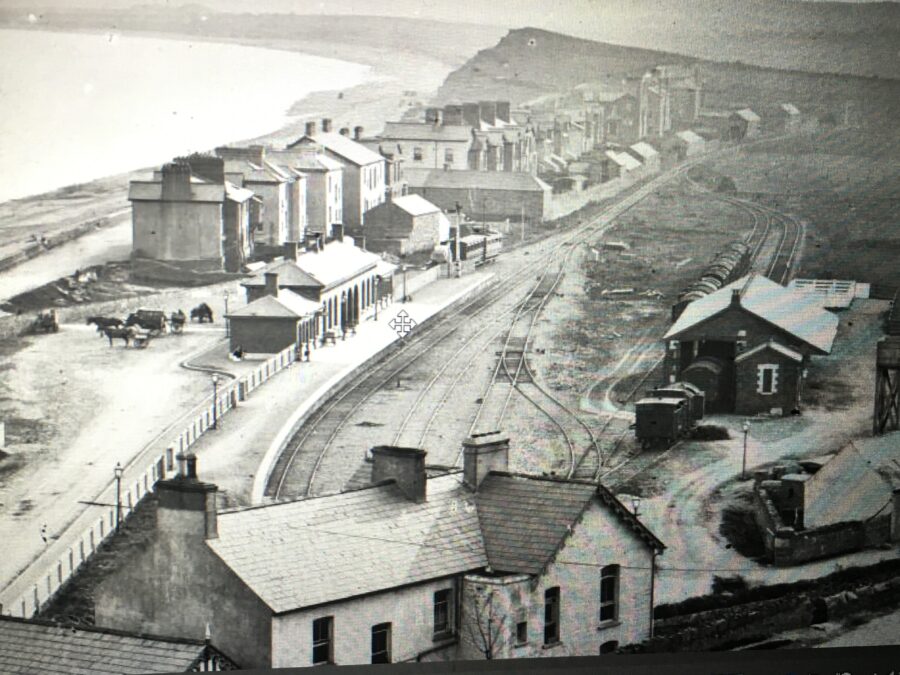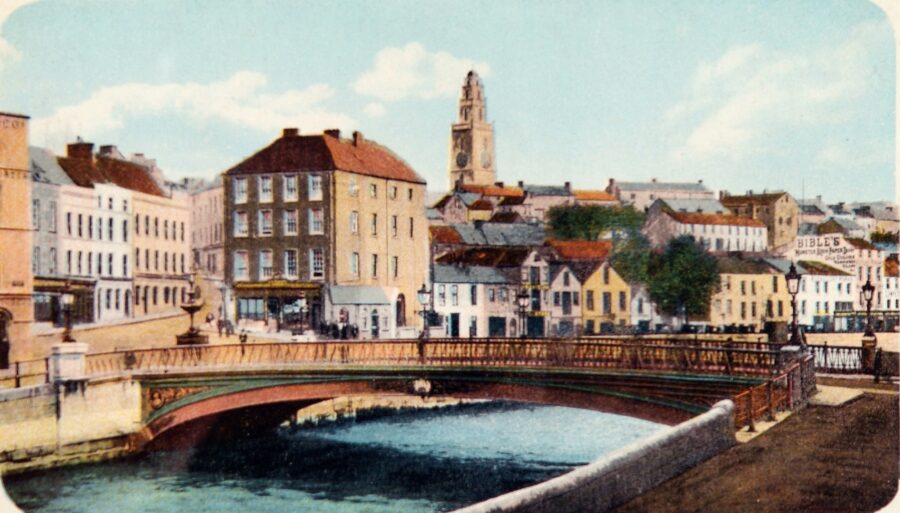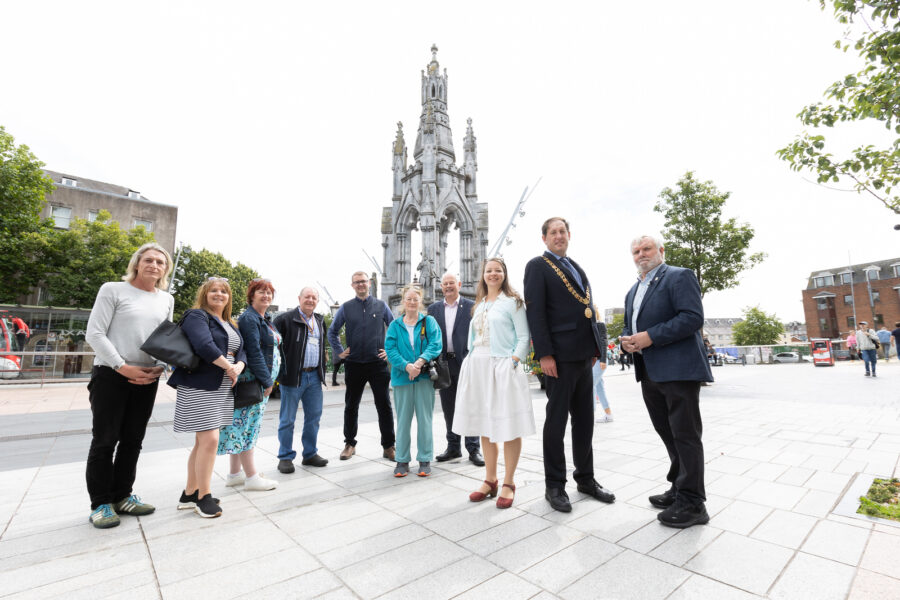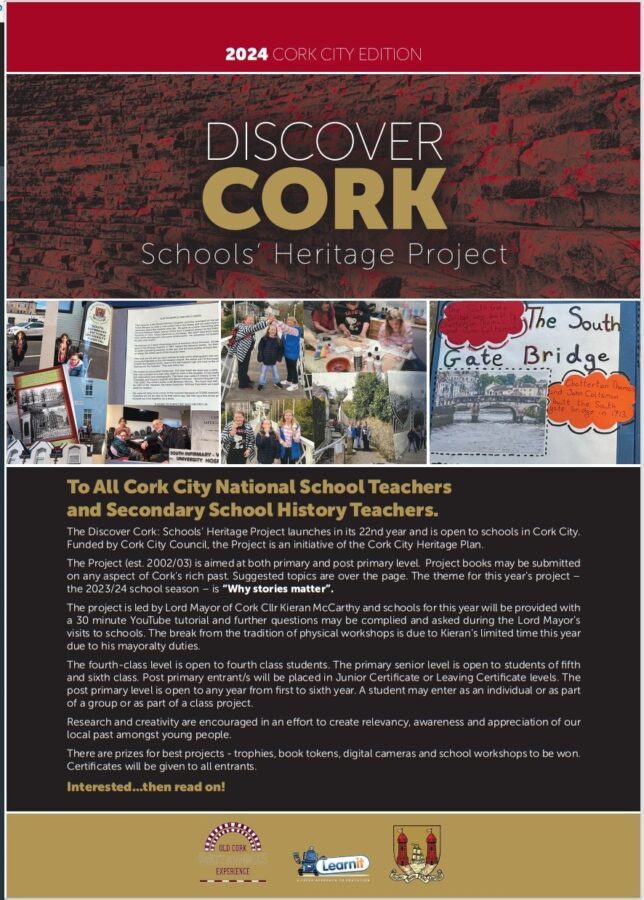Celebrating St Finbarr:
This past week marked the 1400th anniversary of Cork’s patron saint’s death. Ceremonies took place in St Finbarre’s Cathedral and will also take place at Gougane Barra. On reflection, it is amazing how much folklore and legend of our patron saint has defined the Cork city’s heritage.
Historically Finbarr’s Life survives in 35 manuscripts and twenty-one copies of the early vernacular life. Finbarr’s written vernacular life has undergone little major change between its earliest and latest extant copies. These date respectively to about 1450 to 1874. Finbarr’s original life seems to have been composed, perhaps as part of a collection, in Cork between 1196 and 1201 AD, some 25 years after the arrival of the Normans in South Munster. This was a time of reform in the Catholic Church.
There are several ways of spelling Finbarr but the most common spelling is as shown. His connection seems rooted in several religious sites across the Lee Valley from source (Gougane Barra) to mouth (Cork City). Finbarr’s Life was composed initially in Latin between 1196 and 1201 AD. His life was transmitted along three principal lines, each marking a major revision of the original text.
Finbarr’s myth endures in the valley and it is the legacy of St Finbarr that gives the city and valley its core spiritual identity and an origins story. Across the valley, there are churches named after Finbarr and a number of memorials depicting the saint in churches in the form of stained glass windows and statues.
An Enduring Figure:
There are several legends that have made it into the city’s main historical narrative. One legend records that the origins of Cork City begins at the source of the Lee in the scenic Shehy Mountains at the heart of which lies the cherished pilgrimage site of Gougane Barra (Finbarr’s rocky cleft). There St Finbarr reputedly established one of his earlier monasteries on an island in the middle of Gougane Lake. Legend has it that he then left to walk the river valley at the mouth of which he established the monastery (at what is now the site of St FinBarre’s Cathedral in Cork City) overlooking Corcach Mór na Mumhan or the Great Marsh of Munster.
Finbarr’s hermitage was located around the area of present-day Gillabbey Street. It grew to be an important religious centre in southern Munster, providing ecclesiastical services in the form of a church and graveyard, and secular services in the form of a school, hospital and hostel. The annal evidence for the school relates that languages such as Latin were taught and that it was one of the five primary sites in Ireland in terms of size and influence. Word quickly spread of the monastery’s valuable contribution to society, and it became necessary to expand the site.
Between 600 AD and 800 AD, a larger hermitage was constructed east of the original site on open ground now marked by St. FinBarre’s Cathedral. It is believed that over the subsequent centuries this hermitage grew to a point where it extended along the northern district of the Lough, and extended on both sides of Gillabbey Street and College Road about as far as the locality now occupied by University College Cork (UCC).
Around the year 623 AD St Finbarr died at the monastery of his friend, St Colman, at Cloyne in East Cork. His body was returned to his hermitage and his remains were encased in a silver shrine. Here they remained until 1089 when they were stolen by Dermod O’Brien. The shrine and the remains have never been recovered. Legend has it that the location of his tomb is just to the southeast of the present cathedral, overlooked by the famous Golden Angel. St Finbarr’s feast day is celebrated on 25 September. As the city’s patron saint he is still greatly revered. The city is lucky to have such a rich cultural heritage.
Meeting Notes from the Lord Mayor’s Desk:
My school visits are ongoing. I have now entered week four of five weeks where the 115 city schools will be visited. Over 40,000 primary and secondary students are engaged over the 26 morning run. Many thanks for the warm welcome so far.
September 28, It was great honour to celebrate the work of the Cork Learning Neighbourhoods over the past year. There are six Learning Neighbourhoods which include Knocknaheeny, Ballyphehane, Mayfield, The Glen, Togher and South Parish. It is important to recognise the importance of the volunteers across the communities who are promoting lifelong learning. There have been diverse and inclusive learning activities that have taken place over the past year. The contribution of the four key partners, CETB, Cork City Council, UCC and MTU are crucial as well as the work of the Learning City Team.
September 27, I formally opened the ETB’s Future of Education conference in the Concert Hall in City Hall. It’s 10 years since Ireland’s 16 Education and Training Boards were established. Following the hugely successful “ETB Day” celebrations earlier this year, ETBs now turn their attention to the future, What does the ETB school, college and organisation of the Future look like? What do our current learners expect and want for the class of 2033? What do we need from our funders, stakeholders and staff to help us get there?
September 26, I launched Cork City Local Enterprise Office’s Autumn/Winter Training Schedule. Cork City has a strong and successful small business sector. At the Local Enterprise Office, Cork City their goal is to ensure the continued growth and success of micro enterprises in the region. Their responsibilities include Fostering a local enterprise culture, maximising the employment potential of small businesses in the region, and providing a range of business support packages to small-scale enterprises including business information & advice, mentoring and training.
September 24, I launched Cork Walking Week 2023 which took place from the 18th to 24th September. As part of the festival I hosted my historical walking tour of Shandon. The week highlights the stakeholders that are working to make Cork city and county a more accessible and safe place to get out walking and wheeling. Infrastructural developments coupled with determined advocacy for the prioritisation of walking and wheeling will help to break down barriers and normalise walking and wheeling.



